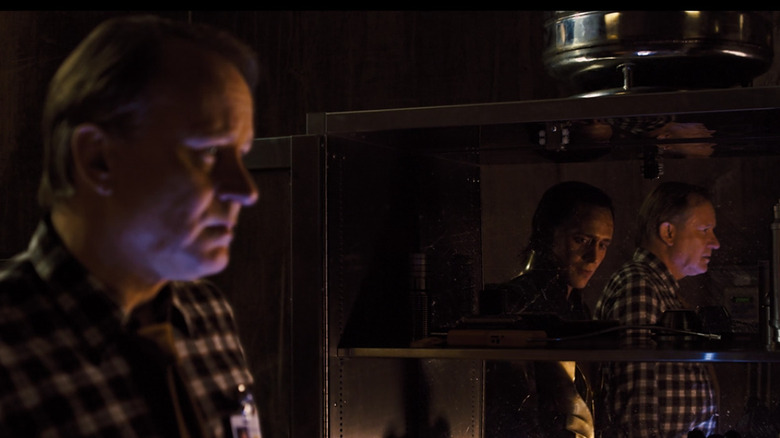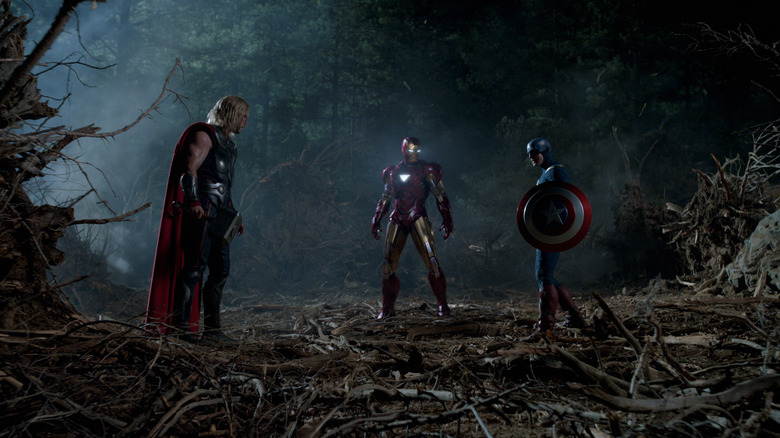Shooting The Credits Scene For Thor Was Such A Disaster That It Changed Production For The Avengers
While post-credits scenes have been a staple of the Marvel Cinematic Universe from the very beginning, it turns out the one from "Thor" may have been one of the most influential in the franchise's history. Albeit in a roundabout way, as revealed in the new book "The Story of Marvel Studios: The Making of the Marvel Cinematic Universe."
We recently ran a review of the book, for those who may want to look into picking up a copy. But we're here to discuss a particularly interesting tidbit related to the "Thor" post-credits scene. Apparently, as revealed in the book, this scene became such a pain to shoot that it ultimately shaped the way all future MCU movies were shot, particularly as it relates to 3D. Joss Whedon, who directed "The Avengers," directed the post-credits sequence in "Thor," which sees Samuel L. Jackson's Nick Fury meeting with Stellan Skarsgard's Erik Selvig to discuss the Tesseract.
The key here is not so much that Whedon wanted to shoot the scene, or the scene itself, but more so that the filmmaker used the sequence as a test as to whether or not they would shoot "The Avengers" with 3D cameras. While Whedon advocated for it, the process proved to be far too complicated and agonizing.
Shooting the Scene
The test itself, per the book, went very poorly and was a paramount factor in the studio's decision on how to address filming in 3D from "Thor" moving forward. So, in essence, every MCU movie for the last decade. Even though the scene, which we've included above, is just 90-seconds long, it ended up being a "abysmal experience." Producer Jeremy Latcham said the following:
"It took so long to change a lens that it was truly awful. It was the longest day to shoot that tiny, tiny scene."
The shoot is said to have devolved because of the complex camera issues caused by 3D cameras. As a result, a scene that should have taken a day to shoot dragged out in a big, bad way. Latham also added it almost compromised getting Skarsgard in "The Avengers," which was extremely necessary:
"Stellan, whom we desperately needed to be in 'The Avengers' so he can tie the whole Loki thing together, came up to me and said, 'We're not going to shoot this movie on these cameras, are we? Because if we are, I will not be in this movie.'"
The Future of the MCU Was Not 3D
With that out of the way, Latcham knew Skarsgard likely wasn't going to be the only actor who wouldn't enjoy shooting an entire, massive blockbuster this way. And thus, the future was set. Marvel Studios, from that point on, opted to shoot all of its movies in 2D and then convert them into 3D or IMAX 3D afterward. More than $20 billion at the global box office later, that seems to have been the right decision.

